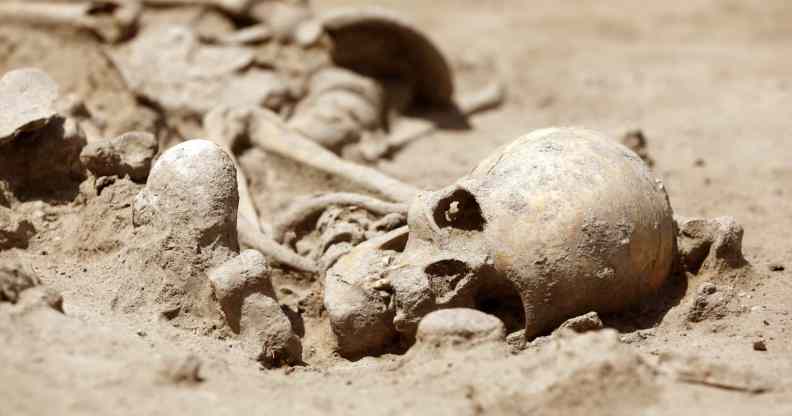Archaeologists say it’s not scientific to assume gender of ancient human remains

Archaeologists urged not to assume gender of ancient human remains (Minko Chernev/EyeEm via Getty Images)
A group of American archaeologists has urged others in the field not to assume the gender of ancient human remains.
In a blog post drawing links across transphobia and archaeology, The Black Trowel Collective stated that “neither sex nor gender are fixed in aspect or immutable over time and between cultures” and that the “past is diverse, multi-vocal, and queer”.
The group added that scientists have a “long history of imposing modern patriarchal gender and sexual norms onto the past.
“Human gender is highly variable and… human beings have historically been comfortable with a range of genders beyond modern ‘masculine’ and ‘feminine’ binaries.”
The blog post itself is from July 2021, however a recent Daily Mail article labelling the archaeology group “Woke Warriors” and claiming that academics are now labelling ancient skeletons as non-binary, prompted a resurgence of interest.
Archaeologist Brenna Hassett replied to the article on Twitter, stating that labelling skeletons is not always that simple, and that anthropologists often don’t assign genders to human remains.
“We have to stop assuming what life was like for people in the past because we can put their skeletons into a biological category,” Hassett said.
“We [anthropologists] don’t even use male/female as categories in our notes… homo sapiens’ sexes really aren’t that different.
“If we take absolute biological determinism into the past, then we lose the truth of what actually happened. We lose the fluidity that has always been present in our cultures, the full variety of ways to be a human… and that’s just science.”
Academics have generally identified the gender of ancient human remains through DNA testing, examining bones, and looking at how the person was buried, including artefacts that surround the body, however this testing is not always completely accurate.
Archaeologists believe that a 1,000-year-old skeleton could in fact have been non-binary, due to the variety of objects the body was buried with.
The skeleton, found in Suontaka Vesitorninmäki, Finland, was buried in “typical feminine costume of the era”, but also with two swords, usually associated with male Viking burials.
Ulla Moilanen, an archaeologist who authored an analysis of the grave in the European Journal of Archaeology, said: “The overall context of the grave indicates that it was a respected person whose gender identity may well have been non-binary.”
Researchers who sampled the grave for DNA – finding that the person may have had Klinefelter syndrome, which is where people assigned male at birth are born with XXY chromosomes – said that the biology may “offer little” about the cultural context of the person’s gender.
Researchers said: “This binary division is, however, problematic… Biology itself offers little in terms of a person’s self-identification.
“Graves may not tell us about the gender systems of the past per se, but rather about the assumptions of the modern people making the interpretations.”

